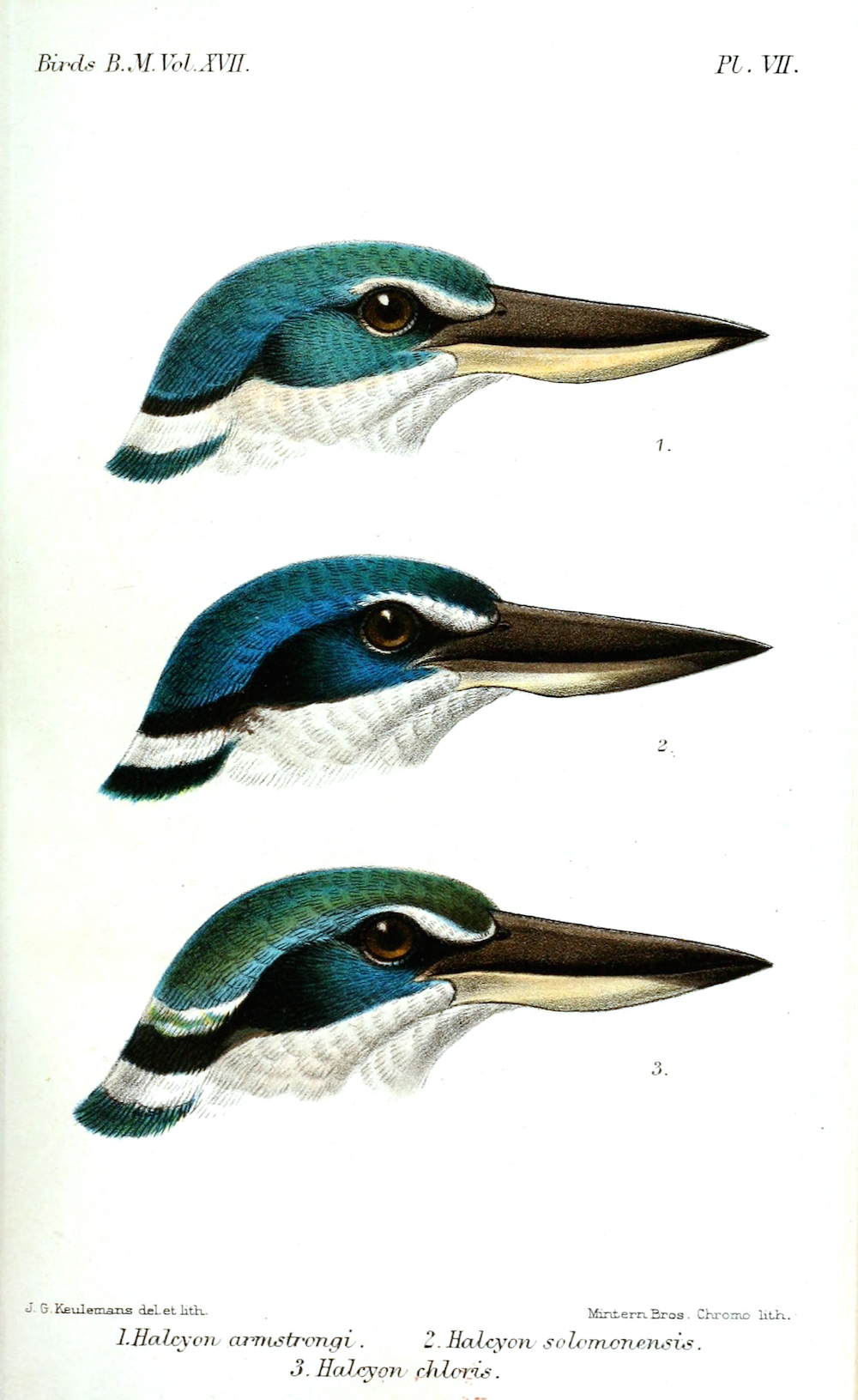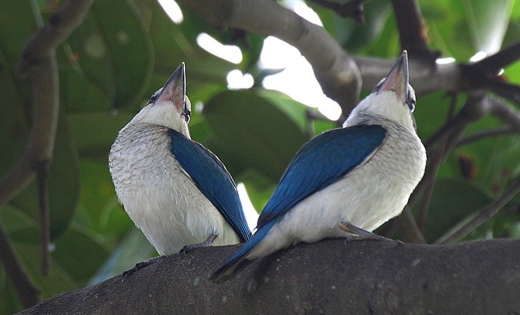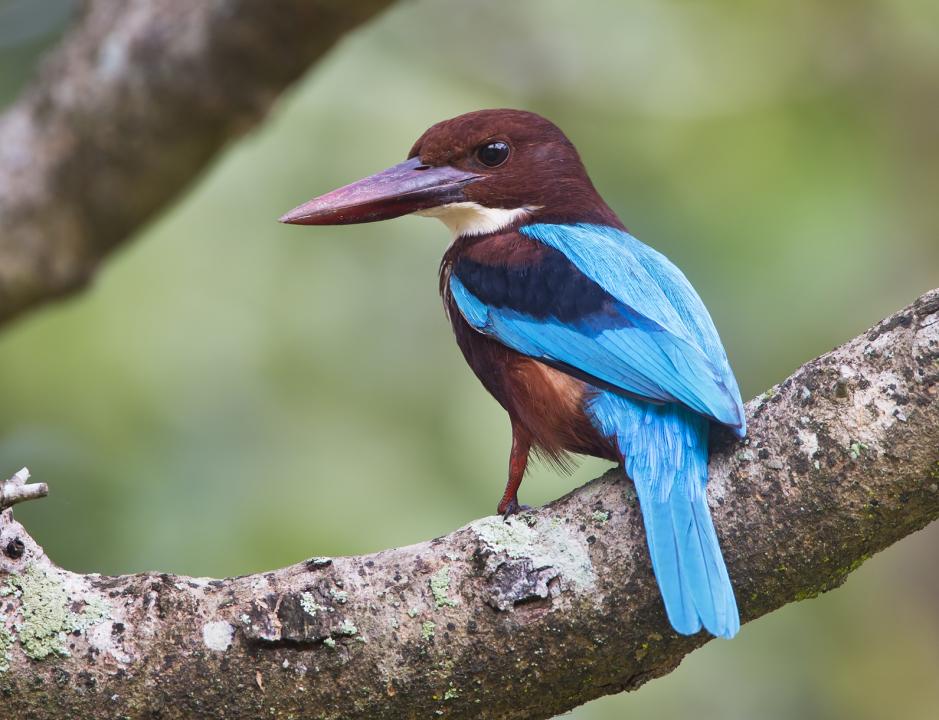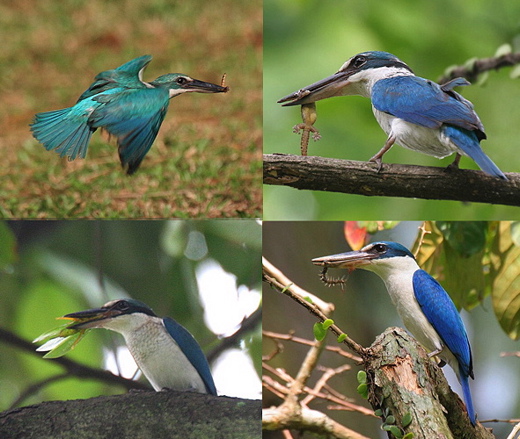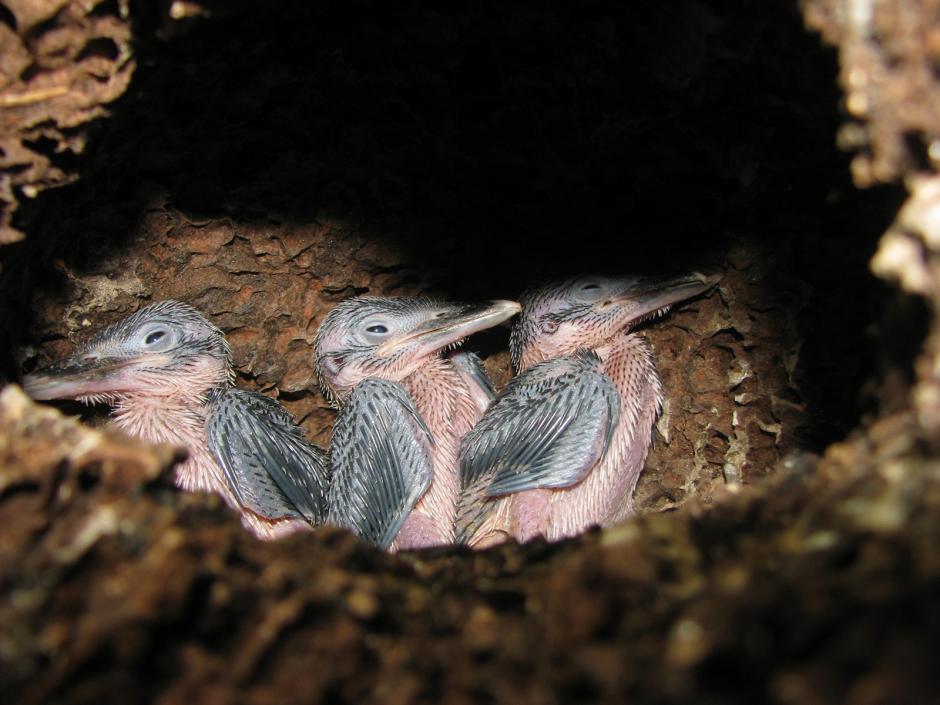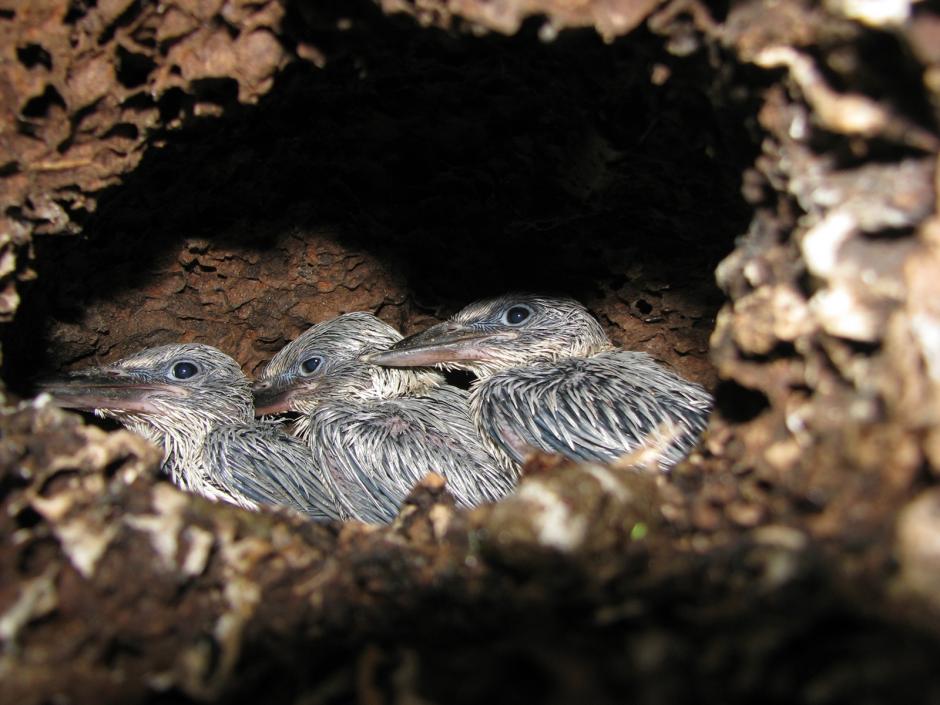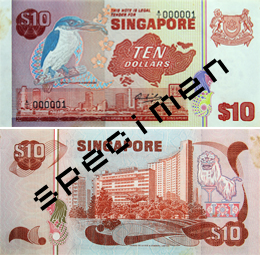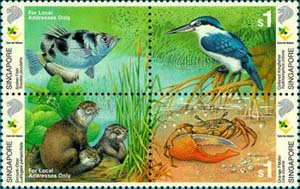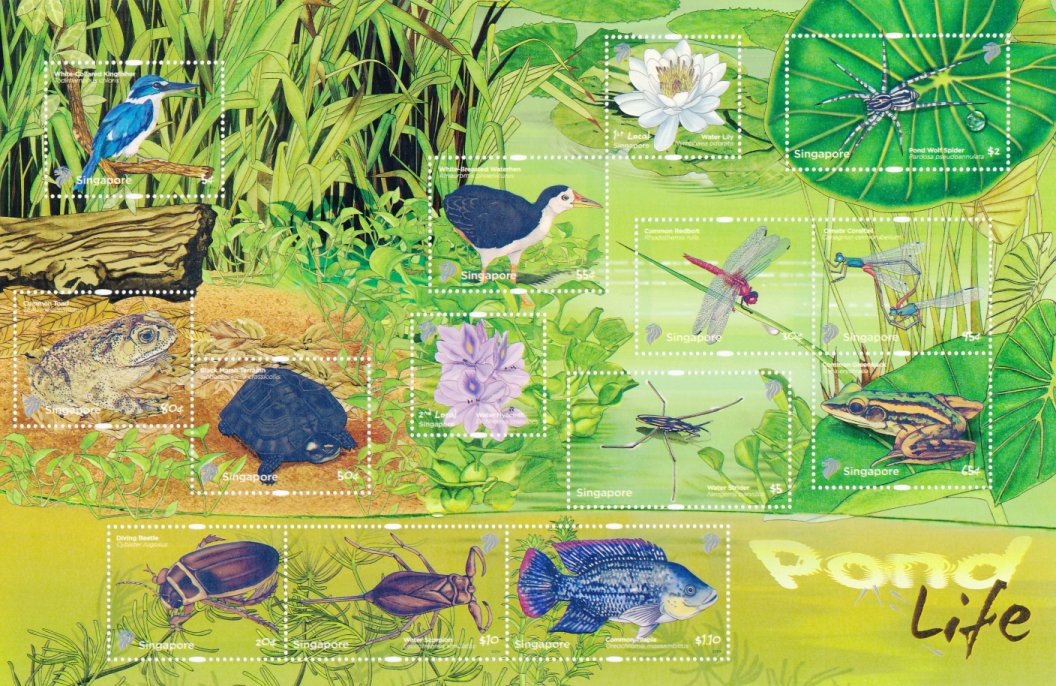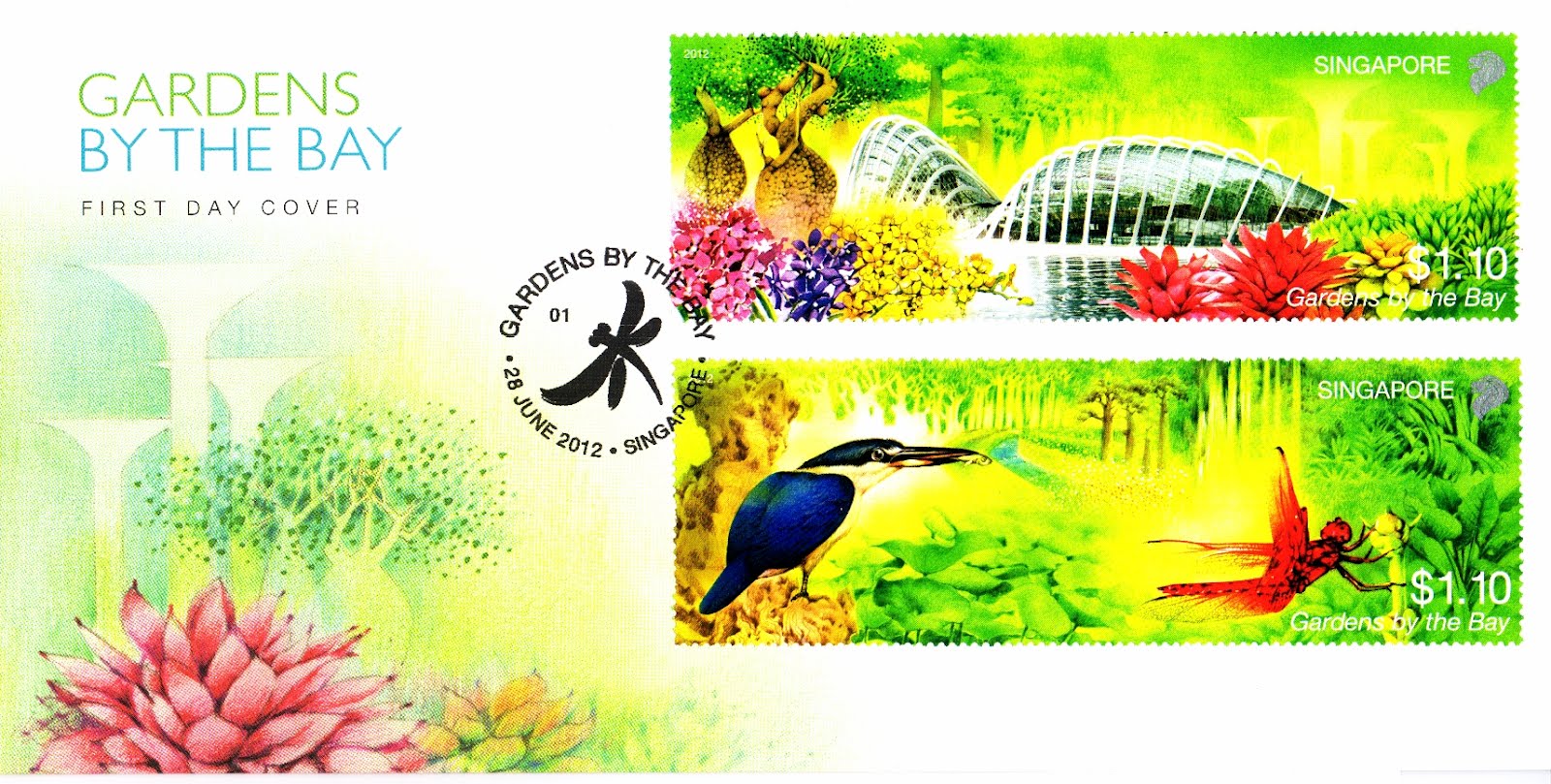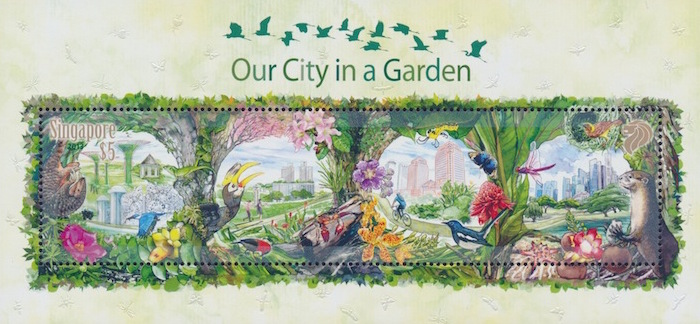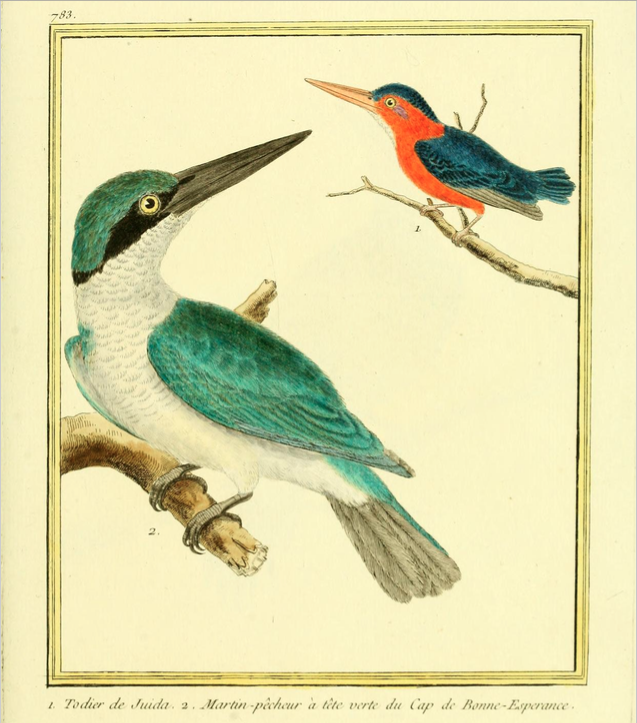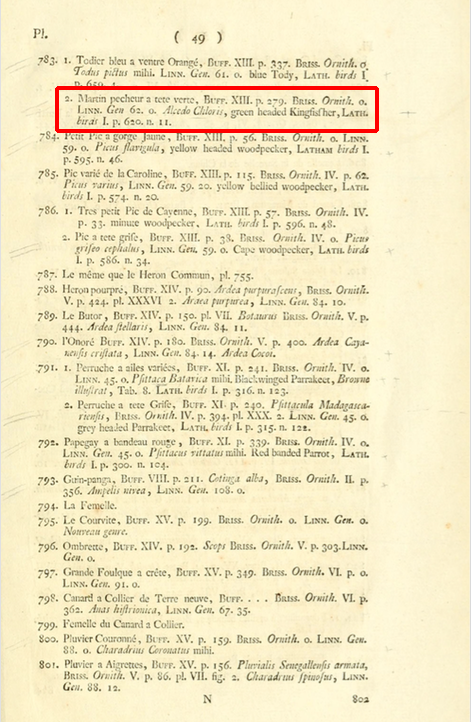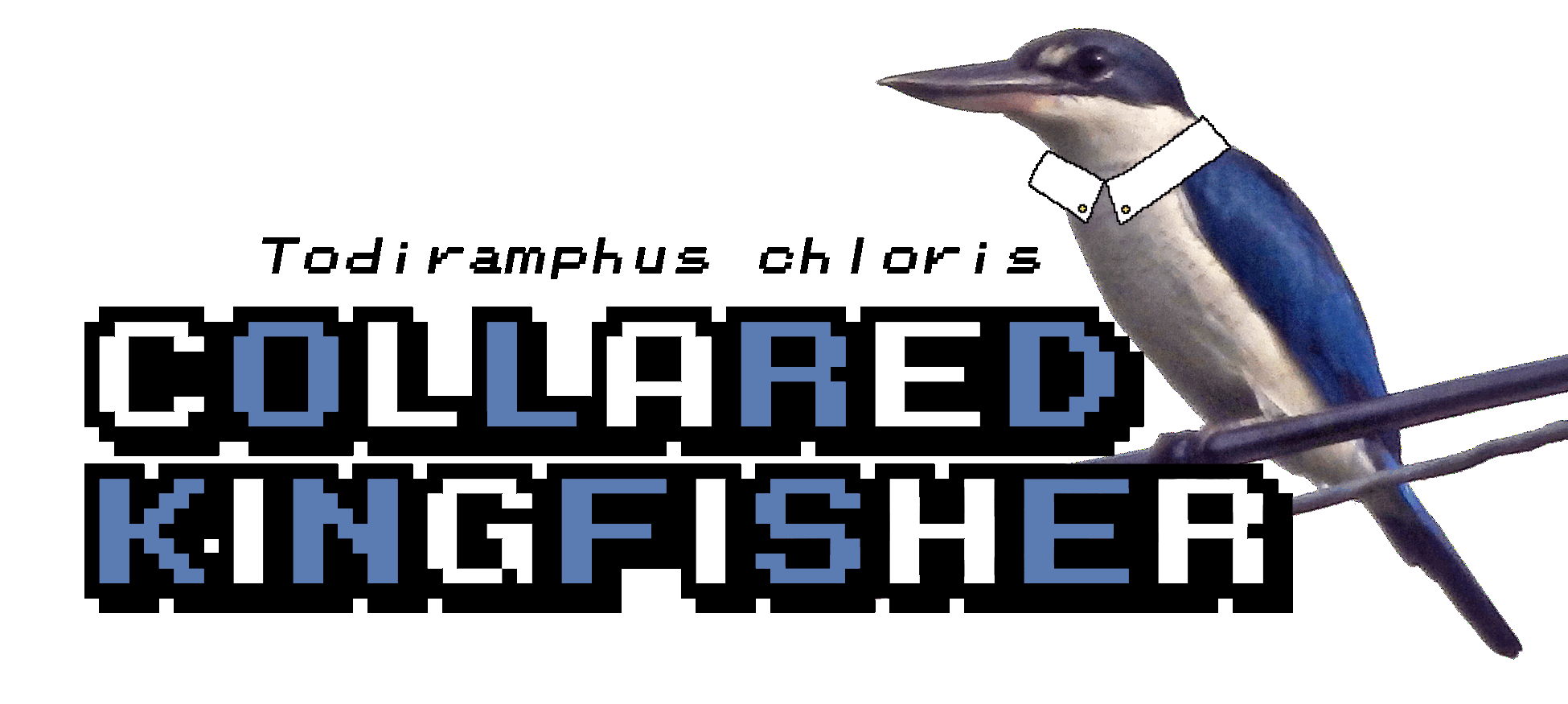
Table of Contents
Todiramphus chloris (Boddaert 1783) [1]
Synonyms: Halcyon chloris Dowsett & Forbes-Watson 1993 [2], Todirhamphus chloris Sibley & Monroe 1990 [3], Alcedo chloris Boddaert 1783 [1]
a.k.a. White-collared Kingfisher, Black-masked Kingfisher, Mangrove Kingfisher, Sordid Kingfisher [4]
As Singapore’s most common kingfisher [5], it has been depicted on currency notes and stamps (See 6. Prominence in human culture). Spot the turquoise and white bird perching atop bare branches and lampposts!
1. Etymology
The specific epithet, chloris, is derived from the Greek word for greenish-yellow, referring to its plumage under light, while the genus name, Todiramphus, is a combination of ‘todus’, the Latin word for tody, a family of small birds related to kingfishers, and ‘ramphos’, the Greek word for bill [4].
The scientific name can thus be translated as ‘greenish-yellow tody-bill’.
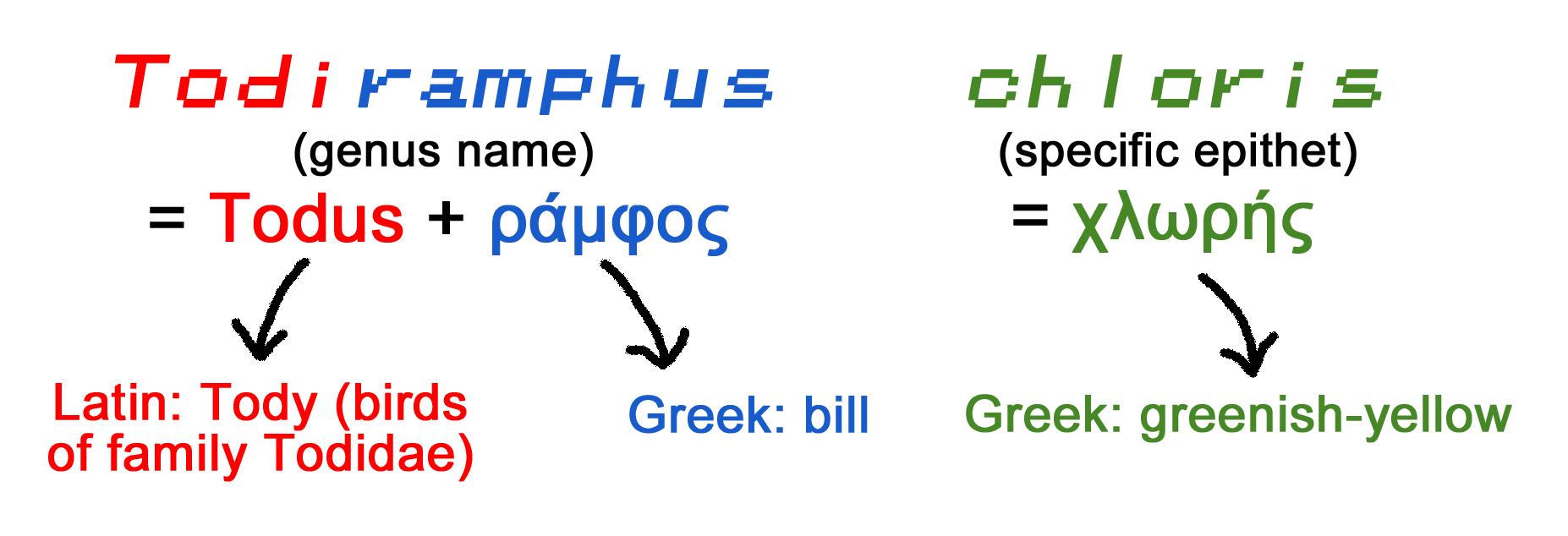
The common name most widely used now is Collared Kingfisher, indicative of the broad white collar around its neck. It was introduced by the Royal Australasian Ornithologists Union (RAOU) in 1978 after heeding the inadequacies of traditional names [5].
For the vernacular names in other languages, please refer to Encyclopedia of Life.
2. Description
2.1. Morphology
Todiramphus chloris humii, the only subspecies found in Singapore [5], is distinguishable by its turquoise crown and above, as well as its clean white underparts, lores and supralorals. It is approximately 24-26 cm in length [6], comparable to mynas.
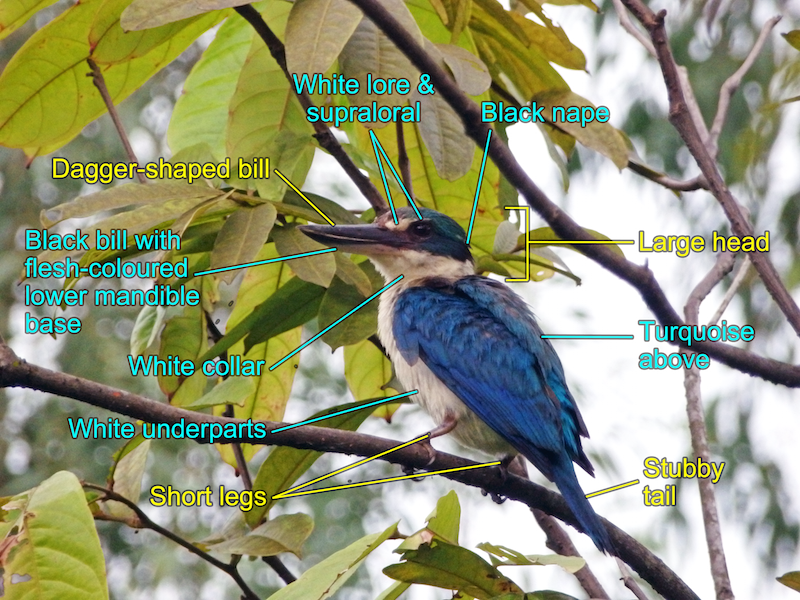
Other subspecies differ mainly in colour with upperparts and crowns ranging from blue to green and underparts and lores (spot between eyes and bill) from white to buff. In some subspecies, the white or buff colour of the lores may spill over to the supraloral (region above the lores until above the eyes), supercilium (stripe above eye, from bill towards back of head) or even crown. A black eyestripe (across eye) may also be present. 10,000 birds provided a comprehensive entry on some of the subspecies here.
Todiramphus chloris armstrongi, T. c. solomonis, and T. c. chloris (from top to bottom) differ slightly in plumage colour and thickness of white and black nape (hindneck) bands.
Scanned image from British Museum (Natural History) Dept. of Zoology (1892, p. 551).
Females are slightly duller and heavier [7]. Juveniles have duller greener above, buffier below, buff-tipped upperwing coverts and dark vermiculated (marked with narrow wavy lines) neck and breast [7].
Juvenile collared kingfishers have scaly markings on their necks and breasts. Photo by Eddy Lee.
2.2. Vocalisation
Collared kingfisher is a loud and noisy bird with variable calls. The most commonly heard call is a harsh and penetrating “kee-kee-kee-kee”, repeated 3-5 times [7][8]. Like other birds, collared kingfishers of different geographical distribution have different dialects [7].
The embedded recording is the common call of the collared kingfisher. To listen to its other calls, visit xeno-canto.
3. Diagnosis
3.1. Sacred kingfisher
The collared kingfisher may be confused with the sacred kingfisher (T. sanctus), a closely related species with similar appearance. The latter is a rare visitor to Singapore and can be differentiated from the collared kingfisher by its smaller size (18-23 cm in length), blackish-green head, and yellowish-buff supercilium, nape and flanks (underpart above belly) [6].
The sacred kingfisher can be distinguished from the collared kingfisher by its smaller size and buff-washed white parts.
3.2. White-throated kingfisher
The call of the collared kingfisher may be mistaken for that of the white-throated kingfisher (Halcyon smyrnensis), another common kingfisher locally. Collared kingfisher can be discerned by its couplet notes of a higher pitch [8].
The white-throated kingfisher may sound like the collared kingfisher but it does not look like it at all.
The white-throated kingfisher can be identified by its largely brown plumage and white throat.
Photo by Marco Valentini. Permission pending.
4. Distribution
4.1. Global
Collared kingfishers have a widespread global distribution, ranging from Eritrea in the Horn of Africa, through much of Southeast Asia, to Pago Pago in the Western Pacific [9].
4.2. Local
Locally, the collared kingfisher has been recorded throughout the mainland and some North and South offshore islands [5].
5. Biology
5.1. Habitat
The maritime bird is found mainly in coastal areas, from mangroves and mudflats to sandy beaches and harbour areas [5] [7] [8] [10] [11]. It also uses nearby coconut plantations, suburban gardens and roadsides [7].
Confronted by various threats such as land conversion, anthropogenic disturbance, sea level rise, erosion and genetic isolation, mangals in Singapore have been cleared extensively [12]. However, owing to its broad diet and the lack of competition, the collared kingfisher has successfully moved inland to colonise riverine areas and newly created open habitats, including open woodlands, scrublands, parklands and gardens [5] [7] [8] [10] [11].
5.2. Diet
Collared kingfishers are opportunistic generalist carnivores. The diet of coastal populations is made up of small crustaceans, like shrimps and crabs, and small fishes, such as mudskippers [7]. Inland populations feed on a wider variety of prey including insects (incl. cicadas, beetles carpenter bees, wasps, grasshoppers, stick-insects, butterflies, moths and spiders), earthworms, snails, land crabs, frogs, lizards, small snakes (up to 11 cm long) and less commonly, eggs and nestlings of small birds and mice [7].
Collared kingfisher feeds on a variety of prey. Photo by Eddy Lee.
Like most birds, they forage in the mornings and evenings, and sometimes in the afternoon if the weather is cooler [13].
As sit-and-wait plunging predators, they can often be seen perching on rocks, coconut palms, bare branches, fence posts and lampposts, where they wait patiently for prey almost motionlessly [7] [14].
After catching their prey, they will return to perch and kill their prey by battering or stabbing using their bills engineered for impaling and capturing prey [7] [13].
5.3. Breeding
Collared kingfishers breed as solitary pairs [7]. Breeding season differs with geographic location [7]. The breeding season of the resident breeders recorded in Singapore is in January to May and August to September [5].
While they typically nest in tree cavities (including arboreal termitaria, holes made by woodpeckers) and earth banks (such as termite or lobster mounds), they also use the base of bird’s nest fern [7] [13].
Two to five eggs are usually laid and placed directly on the ground without nest material; an exceptional record of seven has been reported in Peninsular Malaysia [7] [13]. The eggs are white, a little glossy and faintly translucent [15]. Two broods are often reared in a season [7].
Young collared kingfishers nested in an abandoned termite mound. Photo by Jonathan Axt.
The same young collared kingfishers seven days older. Photo by Jonathan Axt.
Both parents partake in nest building, egg incubation and feeding of the young [7] [14].
An adult collared kingfisher feeding its young nested in a tree cavity.Find out what food is fed to the young in a photographic account by Goh here.
Lim shared a rare pictorial documentation of the mating process of the collared kingfisher here.
5.4. Solitary/Solidarity
Like most kingfishers, the collared kingfisher is highly territorial, defending their territory not just during breeding season but year-round [7] [14]. It is therefore usually sighted alone or in pairs during breeding season.
Its aggressive behaviour has been reported by Dr. Leong here.
5.5. Longevity
Based on ringing studies on the Selangor coast in Peninsular Malaysia, the lifespan of the collared kingfisher is 6-11 years [7].
6. Prominence in human culture
The collared kingfisher used to be on the front of SGD10 notes of the Bird Series currency notes, Singapore’s second set of banknotes circulated between 1976 and 1984 [16]. Birds featured in the Bird Series are recognised for their strength, adaptability and independence, which symbolise Singapore's prospects for progress [16].
Specimen image of the front of the SGD10 Bird Series currency notes.Scanned image from MAS.
It was also featured in several stamp series issued by SingPost.
Specimen image of the Wetland Wildlife Series stamps issued on 11 August 2000.
Scanned image from CS Philatelic Agency, Singapore.
Specimen image of the Pond Life Series stamps that present some of Singapore’s natural heritage issued on 13 April 2011[17]. Scanned image from CS Philatelic Agency, Singapore.
Specimen image of the Gardens by the Bay stamps issued on 28 June 2012 to commemorate the advent of Singapore’s latest attraction [18].Scanned image from Omigo, Singapore.
Specimen image of the Our City in A Garden Series stamps issued on 13 July 2013 to celebrate Singapore's greening efforts [19]. Scanned image from CS Philatelic Agency, Singapore.
Kingfishers, as a whole, are charismatic and interesting creatures that have long intrigued Man. The earliest record of the kingfisher by Man is an Egyptian painting of a kingfisher against a marshland setting that dates back to 14th century BC [20]. Since then, the kingfisher has been mentioned in many myths and folklores. Ho wrote about some of these cultural records here.
7. Conservation status
Collared kingfisher is the most abundant kingfisher locally [5], and thus is not at risk of extinction in Singapore.
Although it is evaluated as Least Concern in the IUCN Red List of Threatened Species mainly on account of its extremely large range, global population is decreasing and some populations are threatened by continual habitat destruction for coastal development [7] [21].
8. Original description & type information
The collared kingfisher was first described as a “green-headed kingfisher” under the protonym, Alcedo chloris, by Dutch naturalist, Pieter Boddaert, in Table des planches enluminéez d'histoire naturelle, de M. D'Aubenton. Avec les denominations de M.M. de Buffon, Brisson, Edwards, Linnæus et Latham. precedé d'une notice des principaux ouvrages zoologiques enluminés (1783, p. 49). The description was based on a drawing of a bird from Cape of Good Hope, South Africa, by French naturalist, Edme-Louis D'Aubenton, in Planches enluminées d'histoire naturelle (p. 783, fig. 2).
Original drawing by D’Aubenton (1781, p. 783).
The bird was captioned ‘green-headed kingfisher of Cape of Good Hope’ in French [22].
Original description by Boddaert (1783, p. 49).
Australian Biological Resources Study (ABRS) wrote that the “original material” could possibly be from the W. G. Graaf Bentinck collection according to Réaumur Museum and might be destroyed [23]. However, it is unclear whether there was really a physical specimen used for the original description. Hence, the holotype (name-binding type) of the collared kingfisher could be the illustration from D'Aubenton.
There are 20 specimens collected in Singapore [5]. Some of them are housed in the Lee Kong Chian Natural History Museum (LKCNHM) [5].
9. Taxonomy & Systematics
9.1. Classification
Below shows the higher-order taxa, which the collared kingfisher belongs to, as provided by ITIS.
Animalia
- Bilateria
- Deuterostomia
- Chordata
- Vertebrata
- Gnathostomata
- Aves
- Coraciiformes
- Alcedinidae (Kingfishers)
- Dacelonidae
- Todiramphus Lesson, 1827
- chloris Boddaert, 1783
- Todiramphus Lesson, 1827
- Dacelonidae
- Alcedinidae (Kingfishers)
- Coraciiformes
- Aves
- Gnathostomata
- Vertebrata
- Chordata
- Deuterostomia
9.2. DNA barcode
Sequences for mitochondrial gene cytochrome c oxidase subunit I (COI) of the collared kingfisher have been barcoded and are available here.
9.3. Phylogenetics
Todirhamphus was previously lumped together with Halcyon. After DNA hybridisation experiments revealed that Halcyon was polyphyletic (i.e. excludes the common ancestor of all members of the taxon), Halcyon was split into two lineages: the Afro-Asian Halcyon and the Australasian Todiramphus [24]. Collared kingfisher was thus renamed T. chloris from H. chloris.
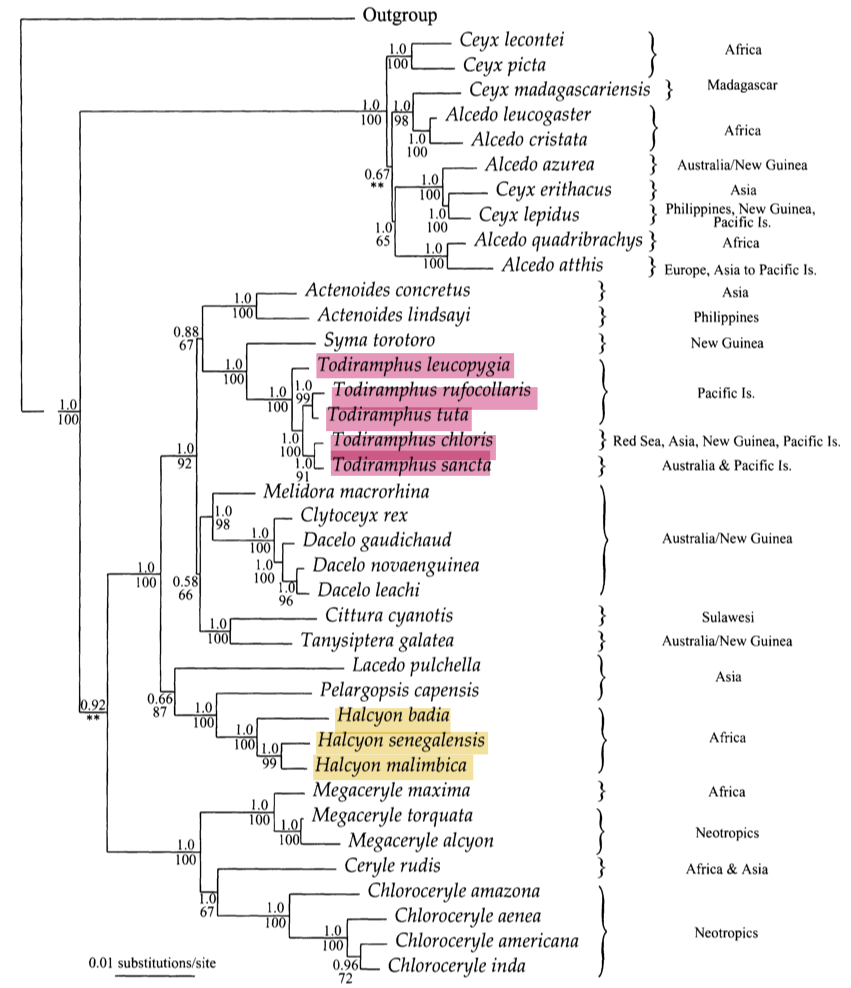
9.4. Species and subspecies delimitation
Previously regarded as conspecific with Talaud kingfisher (T. enigma), collared kingfisher (T. chloris) is now treated as an independent species due to the absence of hybridisation [7].
There is no information on the potential of interbreeding between the parapatric T. chloris and T. sanctus. Additionally, the difference in COI sequence between the two was reported to be only 1.38%, which is less than the commonly used species threshold concept of 2-3% [25]. Therefore, it was recommended to review the species delimitation of T. chloris and T. sanctus [25].
Collared kingfisher is polytypic with 50 subspecies currently recognised [26]. The validity of some of its subspecies is contested due to its close relationship with Talaud kingfisher (T. enigma), Guam kingfisher (T. cinnamominus), sacred kingfisher (T. sanctus), and chattering kingfisher (T. tutus) [26]. Nonetheless, since spatially separated metapopulations are divided into subspecies based on non-standardised criteria, subspecies designation should not be regarded too seriously.
10. Resources for birding
Offline
- Handbook of Birds of the World (HBW) – a 16-volume series that details the world’s avifauna edited by Josep del Hoyo, Andrew Elliott, Jordi Sargatal & David A. Christie
Online
- NParks Bird List – list of birds present in Singapore
- Birds of Singapore – detailed guidebook on Singapore avifauna
- Handbook of Birds of the World (HBW) Alive – online version of HBW
- Bird Ecology Study Group (BESGroup) – a bird behaviour blog based on various contributors from Southeast Asia and beyond
- xeno-canto – a website for sharing of recordings of bird calls and songs
- Internet Bird Collection (IBC) – an audiovisual library of birds of the world
Mobile app
- Birds of Singapore on iOS & Android – a free mobile field guide for Singapore avifauna by Nature Society (Singapore)
11. References
[1] Boddaert, P., 1783. Table des planches enluminéez d'histoire naturelle, de M. D'Aubenton. Avec les denominations de M.M. de Buffon, Brisson, Edwards, Linnæus et Latham. precedé d'une notice des principaux ouvrages zoologiques enluminés. Utrecht. pp. I-XV, [1], 1-58, 1-9.
[2] Dowsett, R. & A. Forbes-Watson, 1993. Checklist of Birds of the Afrotropical and Malagasy Regions, Volume 1: Species limits and distribution. Tauraco Press, Liége, Belgium. 374 pp.
[3] Sibley, C. G. & B. L. Monroe, 1990. Distribution and taxonomy of birds of the world. Yale University Press, New Haven, USA. xxiv + 1111 pp.
[4] Gray, J. & I. Fraser, 2013. Australian Bird Names: A Complete Guide. Csiro Publishing, Melbourne. 352 pp.
[5] Lim, K. S., 2009. The avifauna of Singapore. Nature Society (Singapore), Singapore. 611 pp.
[6] Robson, C., 2010. New Holland field guide to the birds of South-East Asia. New Holland, London. 304 pp. 142 pls.
[7] Woodall, P.F., 2001a. Collared Kingfisher (Todiramphus chloris). In: del Hoyo, J., A. Elliott, J. Sargatal, D. A. Christie & E. de Juana (eds.), 2001. Handbook of the Birds of the World Alive. Volume 6: Mousebirds to Hornbills. Lynx Edicions, Barcelona. Pp. 218-220, pl. 15.
[8] Yong, D. L., K. C. Lim & T. K. Lee, 2013. A Naturalist’s Guide to the Birds of Singapore. John Beaufoy, Oxford. 176 pp.
[9] BirdLife International & NatureServe, 2014. Bird Species Distribution Maps of the World. 2012. Todiramphus chloris. The IUCN Red List of Threatened Species. Version 2014.2. http://maps.iucnredlist.org/map.html?id=22683399. (Accessed 5 Nov.2014).
[10] Davison, G. W. H. & Y. F. Chew, 2013. A Photographic Guide To Birds Of Peninsular Malaysia And Singapore. New Holland, London. 144 pp.
[11] Strange, M., 2013. A Photographic Guide to the Birds of Southeast Asia including the Philippines and Borneo. Tuttle Publishing, Singapore. 400 pp.
[12] Friess, D. A., J. Phelps, R. C. Leong, W. K. Lee, A. K. S. Wee, Sivasothi N., R. R. Y. Oh & E. L. Webb. 2012. Mandai mangrove, Singapore: lessons for the conservation of Southeast Asia's mangroves. Raffles Bulletin of Zoology; S25: 55-65.
[13] Miesle, J., n.d. Collared Kingfishers (Todiramphus chloris). http://beautyofbirds.com/collaredkingfishers.html. (Accessed 26 Oct. 2014).
[14] Perrins, C. (ed.), 2009. Encyclopedia of Birds. Oxford University Press, 656 pp.
[15] Birds of Singapore, 2012. Birds of Singapore: Collared Kingfisher (Todiramphus chloris). http://singaporebirds.net/npassers_01/collared_kingfisher.html. (Accessed 26 Oct.2014).
[16] MAS, n.d. Circulation Currency: Notes http://www.mas.gov.sg/Currency/Circulation-Currency/Notes.aspx. (Accessed 26 Oct. 2014).
[17] SingPost, 2011. Discover the Ecological Diversity in a Pond in the New Low Value Definitive Stamp. 5 pp. http://www.singpost.com/downloads/media/press_release/11/PR20110412.pdf. (Accessed 25 Oct.2014).
[18] SingPost, 2012. Gardens by the Bay Set to Bloom on Stamps!. 5 pp. http://www.singpost.com/download/AboutSingPost/Media/NewsReleases/2012/pr20120627.pdf. (Accessed 25 Oct.2014).
[19] SingPost, 2013. Commemorating 50 Years of Greening Singapore. 5 pp. http://www.singpost.com/download/AboutSingPost/Media/NewsReleases/2013/pr20130713.pdf. (Accessed 25 Oct.2014).
[20] Ho, C. W. L., 2002. The kingfisher experience. Wetlands, 10. https://www.sbwr.org.sg/wetlands/text/101-05.htm. (Accessed 25 Oct.2014).
[21] BirdLife International 2012. Todiramphus chloris. The IUCN Red List of Threatened Species. Version 2014.2. http://www.iucnredlist.org/details/22683399/0. (Accessed 26 Oct.2014).
[22] D’Aubenton, E.L. 1781. Planches Enluminées d'Histoire Naturelle. In: Buffon, G.L., 1749-89. Histoire Naturelle des Oiseaux. De l'Imprimerie Royale, Paris.
[23] ABRS, 2011. Australian Faunal Directory. Species Todiramphus (Todiramphus) chloris (Boddaert, 1783). Australian Biological Resources Study, Canberra. http://www.environment.gov.au/biodiversity/abrs/online-resources/fauna/afd/taxa/Todiramphus_%28Todiramphus%29_chloris. (Accessed 5 Nov.2014).
[24] Moyle, R., 2006. A molecular phylogeny of kingfishers (Alcedinidae) with insights into early biogeographic history. The Auk, 123: 487-499.
[25] Luczon, A. U., A. H. M. Mohammad Isa, J. P. Quilang, P. S. Ong & I. K. C. Fontanilla, 2010. DNA barcoding of the White-Collared Kingfisher Todiramphus chloris (Boddaert 1783) (Alcedinidae) using the mitochondrial cytochrome oxidase subunit I gene. Philippine Science Letters. 3: 74-77.
[26] Woodall, P.F., 2001b. Collared Kingfisher (Todiramphus chloris). In: del Hoyo, J., A. Elliott, J. Sargatal, D. A. Christie & E. de Juana (eds.), 2001. Handbook of the Birds of the World Alive. Lynx Edicions. http://www.hbw.com/species/collared-kingfisher-todiramphus-chloris. (Accessed 25 Oct.2014).
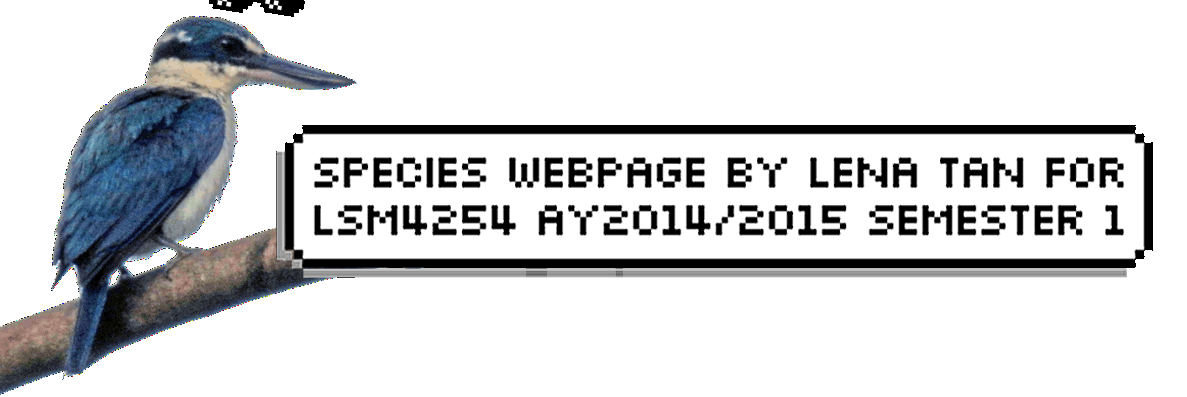
Media licensing note: All images not from the author have been credited duly and reproduced with permission unless otherwise stated. Scans from Biodiversity Heritage Library (BHL) are in the public domain, while audio clips from xeno-canto and videos from YouTube were shared under the Attribution-NonCommercial-ShareAlike 4.0 International license and the fair use doctrine respectively. The phylogenetic tree was likewise shared under fair use.
